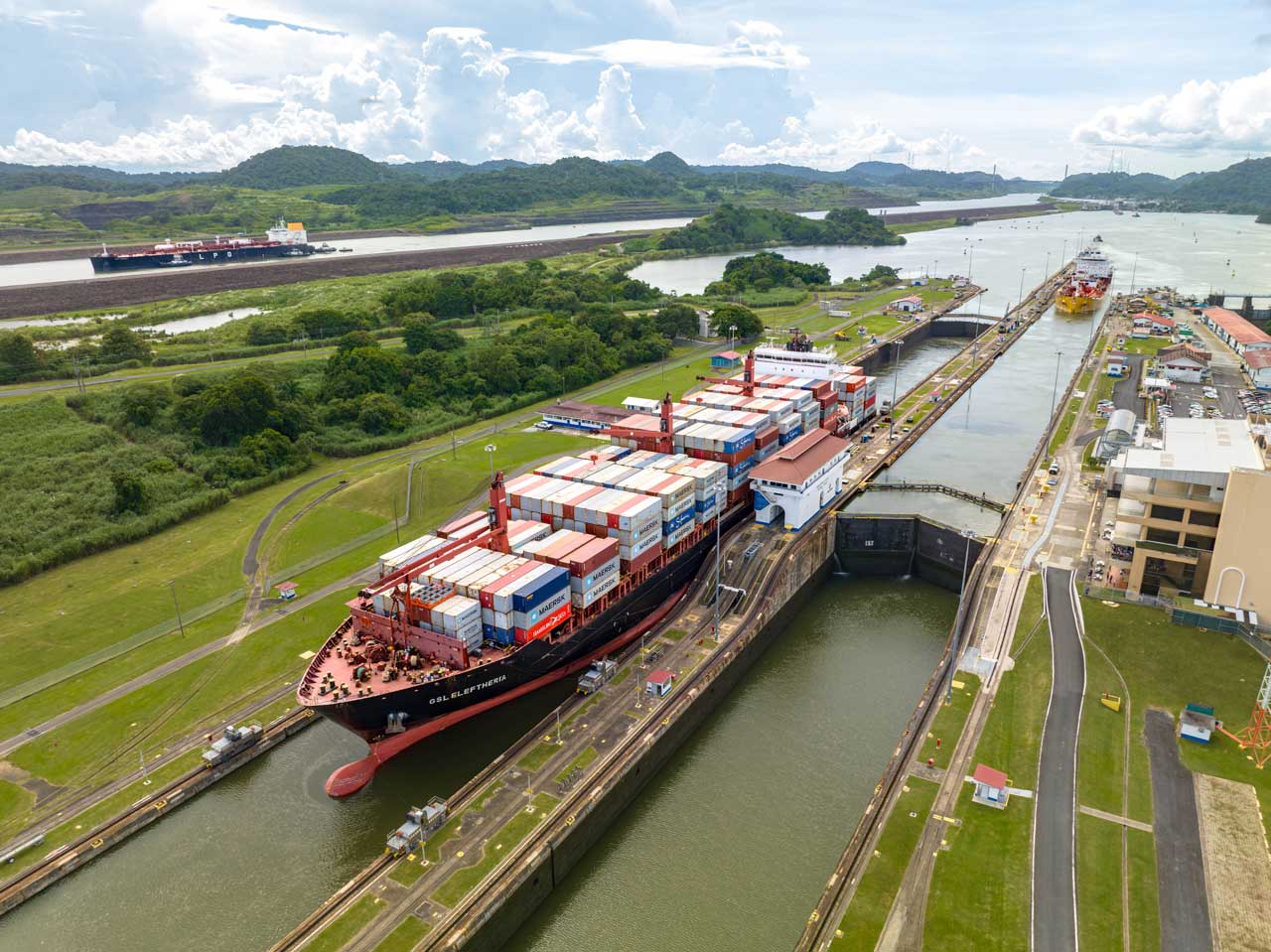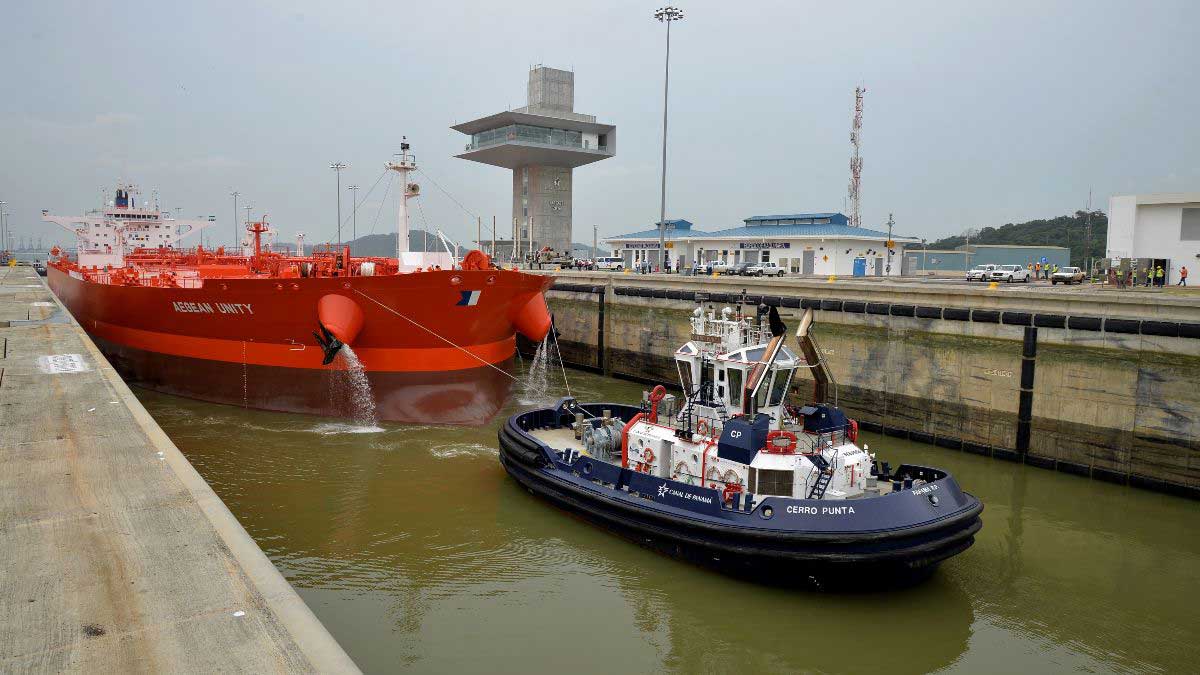-
WILL YIELD AN ADDITIONAL TRANSIT PER DAY; INCREASE ANNUAL NET TONS BY 10 MILLION
PANAMA CITY, Panama, January 26, 2006 – Each day at the Panama Canal, vessels are programmed in a convoy in each direction during daylight hours, one of northbound vessels from the Pacific Ocean and another southbound from the Atlantic Ocean. Typically, the northbound convoy´s last Panamax vessel clears the meeting point at Gamboa, 30 kilometers from the Pacific anchorage, at approximately noon each day. The 13 kilometer-long Gaillard (Culebra) Cut stretches over the continental divide between Pedro Miguel Locks on the Pacific side of the Canal and Gamboa. Because Panamax vessels cannot yet meet oncoming traffic in the Cut (the narrowest channel in the Panama Canal), the Pedro Miguel Locks remain idle as much as 2.5 hours daily.
The Panama Canal Authority (ACP) announced today a capacity-building measure to leverage this idle time at one end of the waterway while vessels are making their transits from the opposite side. The new tie-up station, located at the east side of the Gaillard Cut and just north of the Centennial Bridge, permits vessels to advance from the Pacific Ocean to the southern end of the Gaillard Cut while the first southbound vessel is heading toward the Pedro Miguel Locks.
One Panamax or two smaller vessels may be moored at the Cucaracha (Reach) Tie-up station, as it is called. The tie-up station will not only increase capacity, but also will provide flexibility in scheduling, especially during fog season and locks’ maintenance outages. Moreover, it can be used for vessels experiencing systems difficulties while in transit, thus enhancing safety.
After months of rigorous construction and testing, the first vessel was docked at the Cucaracha Station on December 30, 2005. The new tie-up station will help accommodate growing demand by providing the capacity equivalent of one additional Panamax transit each day or approximately 10 million net Panama Canal/Universal Measurement System (PC/UMS) tons annually.
“The ACP has been working diligently to meet increasing demand for the Canal’s ‘All-Water Route’ by augmenting capacity, as well as by revising operations and maintenance methodology. We recently added two booking slots to our reservation system, specifically for Panamax vessels. As such, we will be able to accommodate at least seven more weekly line services over the next 18 months. We are very proud of the innovative approach the Canal Operations and Maintenance workforce has taken to come up with short-term practical solutions,” said ACP Maritime Operations Director, Jorge L. Quijano.
A second tie-up station is scheduled to be constructed in the Paraiso Reach, located just north of the Pedro Miguel Locks on the southwestern end of the Gaillard Cut. The initial dry excavation work was contracted in December 2005. The project is slated for completion toward the end of 2007. “Once this new tie-up station is completed, two additional Panamax vessels will be able to advance to it while the first vessel of the southbound convoy reaches the Pedro Miguel Locks. When this occurs, the Pedro Miguel Locks will be operating virtually 100 percent of the time, thus maximizing Canal throughput and adding an additional 20 to 30 million PC/UMS tons of annual capacity,” added Mr. Quijano.
ABOUT THE PANAMA CANAL AUTHORITY
The Panama Canal Authority is the autonomous agency of the Government of Panama in charge of managing, operating and maintaining the Panama Canal. The operation of the Panama Canal Authority is based on its organic law and the regulations approved by its Board of Directors. For more information, please refer to the Panama Canal Authority’s Web site: www.pancanal.com.The Authority’s responsibility to the Panamanian people is paramount. The Canal belongs to the people and benefits from the Canal should accrue to as many Panamanians as possible. The Authority will plan its future so that it will continually contribute to the economic development and welfare of the citizens of Panama.




